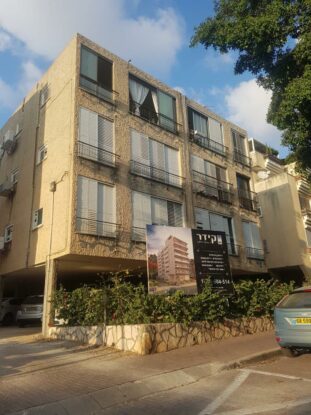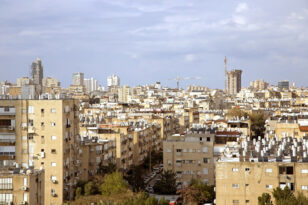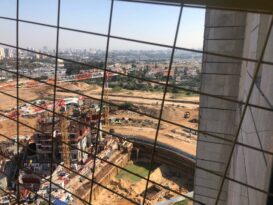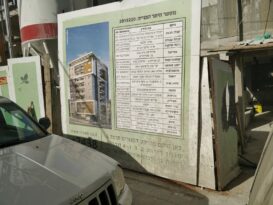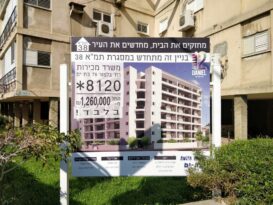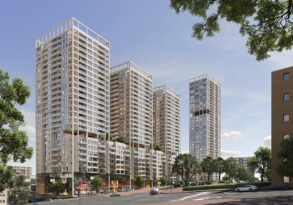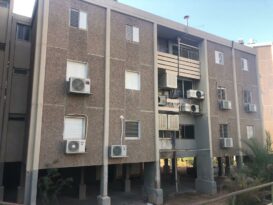Israel urban renewal plan TAMA 38 , which resulted in thousands of new apartments being built each year in old areas of the country, is expected to be canceled in two years’ time. Recently, the highlights of a new plan proposed to replace TAMA 38 were revealed. While building rights are expected to increase, the tax benefits enjoyed by TAMA 38 are likely to end. Further, the new Israel urban renewal plan will be applicable mainly to areas in the center of the country.
The government is promoting a new pathway for Israel urban renewal, which is expected to replace the existing plan TAMA 38 that is due to expire in October 2022. In recent weeks, Interior Minister, Aryeh Deri, has instructed Israel Planning Administration Director Dalit Zilber to prepare a law memorandum detailing the main points of the new plan, according to a number of guiding principles.
The main purpose of TAMA 38, which the new plan is expected to replace, is to perform urban renewal on one or two buildings, in a long-established area. This is different from Pinui-Binui (evacuation-construction), another Israel urban renewal scheme which involves the demolition of large complexes in their entirety, sometimes consisting of street blocks and even entire neighborhoods, and rebuilding them.
Main goal of Israel urban renewal scheme TAMA 38 was disregarded
When TAMA 38 was first enacted in 2005, its stated goal was to strengthen buildings against earthquakes. However, the motivation of most apartment owners soon became purely economic: primarily seeking to improve their properties through the addition of a balcony, parking space, and sometimes a room or two during the reconstruction phase. The fact that the original and main purpose of the plan was forgotten was also reflected in the way that the areas in which the scheme was most economically viable were in the center of the country, where land values are high. This is despite the fact that the areas where the reinforcement of buildings is most required are around the Syrian-African rift in Israel’s far periphery, in cities such as Tiberias, Safed, Beit She’an, and Eilat.
Like TAMA 38, the new Israel real estate plan is expected to include two renewal tracks for urban renewal in Israel: the first track, known as a “concentration and reinforcement” track, involves strengthening the foundations of an existing building, renewing and renovating its infrastructure, and adding additional floors to the existing building; in the second track, a “demolition and construction” route, the building is completely demolished, and a new building is built in its place.
Significant differences exist between TAMA 38 and the new Israel urban renewal plan
However, this is where the similarities between the old and new plans end. The main differences between them are as follows:
- The framework of TAMA 38 did not require developers to go through a lengthy process of gaining approval for a construction plan, rather they applied for building permits through a shortened application process. Under the new plan, however, developers will be required to get full approval from the local authority, which could delay the entire procedure by six months to a year at best, and by more than a year at worst.
- The law establishes the addition of universal building rights for each of the routes. Under the new plan, in the “concentration and reinforcement” track, additional rights consist of 200% of the existing built-up area will be granted, while in the “demolition and construction” track, rights will comprise an additional 350% relative to the existing built-up area, provided that the new building does not exceed 10 floors. For example, on an existing five hundred square meter building built on three floors, a developer would receive an additional 1,000 sqm of building rights in the first track, and an additional 1,750 sqm in the second. However, other than the right to build a protected room (“mamad”), the new law does not commit to granting any additional rights to the owners of existing apartments. The allocation of additional rights to existing apartments and new apartments will be at the discretion of the local authority, decided upon during the planning process.
- The local authority may take a certain amount of area (up to 10% of the project in the first track; and up to 15% of the project in the second track) for public uses such as kindergartens, synagogues, community centers, welfare institutions, culture, etc.
Public usage of space limits the financial viability and poses potential problems
On the face of it, the new plan for urban renewal in Israel seems praiseworthy: It addresses one of the most serious deficiencies of TAMA 38, namely, the construction of hundreds of new housing units in certain neighborhoods without the municipality adding public areas to provide services to the growing population. However, taking space from the project for public usage is a move that could harm the projects economically, especially in areas far from Tel Aviv, where profitability is questionable to begin with. This is without mentioning the fact that apartment owners may not favor certain pubic uses of space in their buildings, such as drug rehabilitation facilities or hostels. Further, some public uses, such as a synagogue, may be perceived as noisy and claimed to impair the quality of life of the residents in the building.

Improvement levies may be imposed
Another significant issue on which there is currently a lack of clarity regarding the new plan for urban renewal in Israel is the improvement levies (Mas Hashbacha) that will be imposed on projects under the new plan. Mas Hashbacha is a tax imposed by the state on land value increases resulting from planning decisions. While the projects in TAMA 38 were exempt from paying this tax, in order to encourage them, the situation regarding the new plan remains unclear.
New Israel urban renewal plan unlikely to be adopted in areas where it is needed most
But the biggest issue with the new Israel urban renewal plan, on which dozens of experts interviewed in the economic media have agreed in recent weeks, is that the consolidated plan is unlikely to solve the greatest disadvantage of TAMA 38, and that is its irrelevance to the periphery. This is because if the building rights multiplier – 200% or 350% – is applied to the whole country, without distinguishing between regions – it is inevitable that developers will concentrate on projects in the center of the country where apartment prices, and hence profitability, will be higher.
